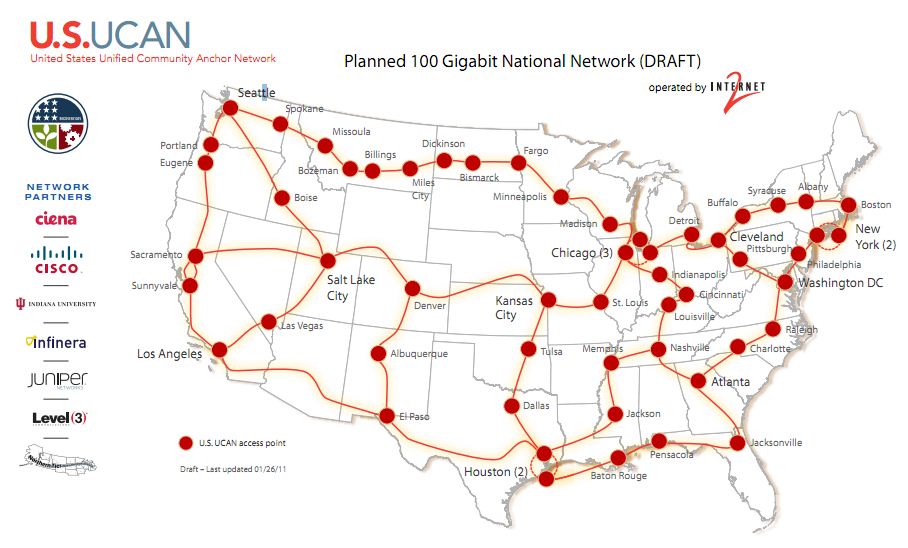Internet2 Upgrades Speed to 8.8 Terabits per second
WASHINGTON March 10, 2011 – Internet2, the nationwide ultra high-speed education network, announced that it will increase the network’s speed by a factor of nearly 900. The network’s existing speed is already approximately 1,000 times as fast as a the fastest widely-available high-speed residential
WASHINGTON March 11, 2011 – Internet2, the nationwide ultra high-speed education network, announced that it will increase the network’s speed by a factor of nearly 900. The network’s existing speed is already approximately 1,000 times as fast as a the fastest widely-available high-speed residential connection.
Internet2 will increase its speed from 100 gigabits per second (100,000 megabits per second) to 8.8 terabits per second (88,000,000 Mbps).
The University Corporation for Advanced Internet Development (UCAID) administers the network. Currently the network connects 66,000 research institutions nationwide. The network was set up in 1997 to connect 100 research organizations. Internet2 was established to provide research institutions increased bandwidth separate from the commercial internet that was growing in popularity.
Last year the UCAID won a $62.5 million grant via the Broadband Technology Opportunities Program to connect 200,000 community anchor institutions nationwide and setup the United States Unified Community Anchor Network (U.S. UCAN).
The U.S. UCAN plans to expand the current Internet2 network to include K-12 schools, community colleges, hospitals and other anchor institutions.
Ciena, a Maryland based network infrastructure firm, developed the technology responsible for the massive speed upgrade.
“Our partnership with Internet2 to deliver this leading edge new national network underscores Ciena’s unique ability to meet the advanced networking needs of the research and education and high performance computing communities,” said Mike Aquino, senior vice president of global field operations at Ciena. “This collaboration also demonstrates the work we’ve done to support a variety of American Recovery and Reinvestment Act projects that are driving broadband connectivity throughout the U.S. to improve education, healthcare, public safety and other critical areas of everyday life.”









Member discussion